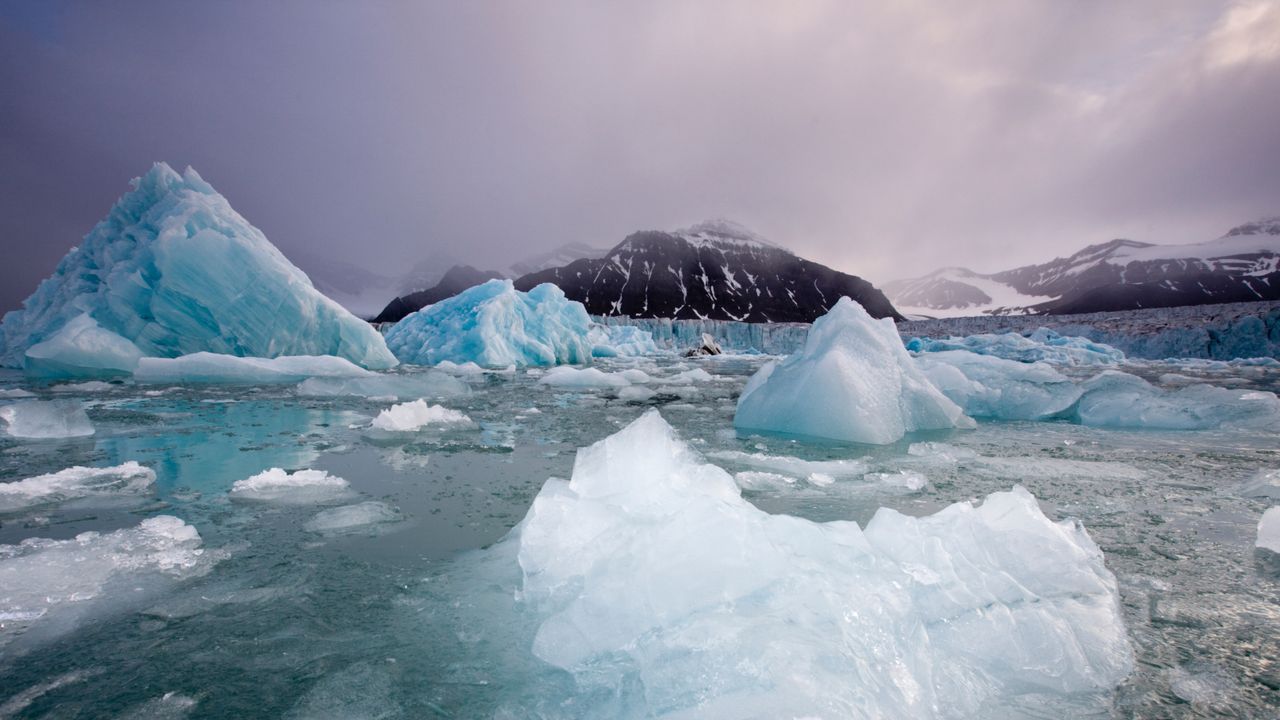**Arctic Ocean’s Methane Cycle in the Past Warns of Potential Climate Risks**
The Arctic Ocean was once a significant source of greenhouse gases to the atmosphere — and it could become one again, researchers warn.
Methane (CH4) is second only to carbon dioxide (CO2) in trapping heat within Earth’s atmosphere. Since 2020, human-driven greenhouse gas emissions have increased atmospheric methane by about 10 parts per billion per year, more than twice the annual increase of CO2. However, scientists still do not fully understand how the methane cycle will respond as our planet continues to warm.
A new study published on September 25 in the journal *Nature Geoscience* looks to methane cycling in Earth’s past for clues about our future.
### Studying the Past: The Paleocene-Eocene Thermal Maximum
The research team focused on a period of rapid warming and ocean acidification that occurred around 56 million years ago, known as the Paleocene-Eocene Thermal Maximum (PETM). The PETM is among the best-documented examples of a major climate shift driven by dramatic disruptions in Earth’s carbon cycle — a scenario much like the global warming we face today.
Scientists know that during the PETM, there was widespread release of CO2 and CH4 into the oceans and atmosphere, leaving distinct geochemical fingerprints in sedimentary rocks from that time. But despite three decades of research, the exact sources of these greenhouse gases remain uncertain.
### Exploring Ancient Arctic Sediments
To better understand how the carbon cycle operated during the PETM, the researchers analyzed a 50-foot (15 meters) core of marine sediments drilled from the central Arctic Ocean. These sediments, collected during the Integrated Ocean Drilling Program’s Arctic Coring Expedition, date back 66 million years and preserve evidence of the PETM warming event and the subsequent recovery period when the climate eventually stabilized.
The team extracted organic molecules, called biomarkers, from the sediments and measured different forms of carbon isotopes within them. These biomarkers helped identify the microbes that lived on the seafloor when the sediments were deposited, while the carbon isotopes revealed what those microbes were consuming.
Methane typically contains lighter carbon isotopes than CO2, meaning methane-consuming microbes leave behind biomarkers with characteristically light carbon isotopes.
### Shifts in Methane-Eating Microbes During PETM
Tracking these biomarkers revealed a shift in the dominant methane-eating microbes in the Arctic Ocean during the PETM. Biomarkers associated with anaerobic oxidation of methane (AOM) microbes — which today consume most methane in marine sediments due to abundant sulfate in modern oceans — decreased during the PETM.
Scientists believe sulfate levels were much lower during the PETM, limiting the capacity of AOM microbes to consume methane. The researchers suggest that a massive release, or “burp,” of methane overwhelmed the sedimentary AOM biofilter, allowing methane to escape into the seawater.
Once methane reached the water column, a different group of microbes took over.
### Potential Transformation of the Arctic into a Carbon Source
The study proposes that this microbial switch may have turned the Arctic Ocean into a significant source of CO2 following the onset of PETM warming.
Under normal conditions, AOM in sediments produces bicarbonate, an alkaline compound that buffers the ocean and helps stabilize its pH. In contrast, aerobic oxidation of methane (AeOM) in the water column releases CO2, which contributes to warming and ocean acidification. AeOM microbes also consume oxygen, enabling oxygen-intolerant organisms to proliferate and reduce sulfate availability, further starving AOM microbes.
### What Does This Mean for Today’s Arctic?
Could a similar methane cycle switch in the modern Arctic accelerate climate change?
“We think it is possible and very likely,” said Bumsoo Kim, study lead author and organic geochemist at NASA Johnson Space Center. The Arctic Ocean is becoming warmer and fresher, which would consume more oxygen and potentially trigger similar changes in the methane cycle, Kim explained. (At the time of the study, Kim was a researcher at Texas A&M University.)
However, not all scientists are certain.
Sandra Kirtland Turner, associate professor of paleoclimate and paleoceanography at the University of California, Riverside — who was not involved in the study — noted, “The factors that led the Arctic to become a carbon source in the past may not be directly analogous for the future. The Arctic Ocean was physically more restricted from the global ocean, and ocean chemistry was different in significant ways.”
Kirtland Turner emphasized that the study serves as an important reminder that carbon cycle feedbacks can amplify or extend warming. “Today, carbon cycle feedbacks remain poorly constrained and are rarely even considered beyond the year 2100,” limiting our understanding of their long-term impacts.
—
*This research highlights the complexity and potential risks related to methane emissions in the Arctic and underscores the need for continued study of carbon feedbacks in a warming world.*
https://www.livescience.com/planet-earth/arctic-ocean-methane-switch-that-helped-drive-rapid-global-warming-discovered

